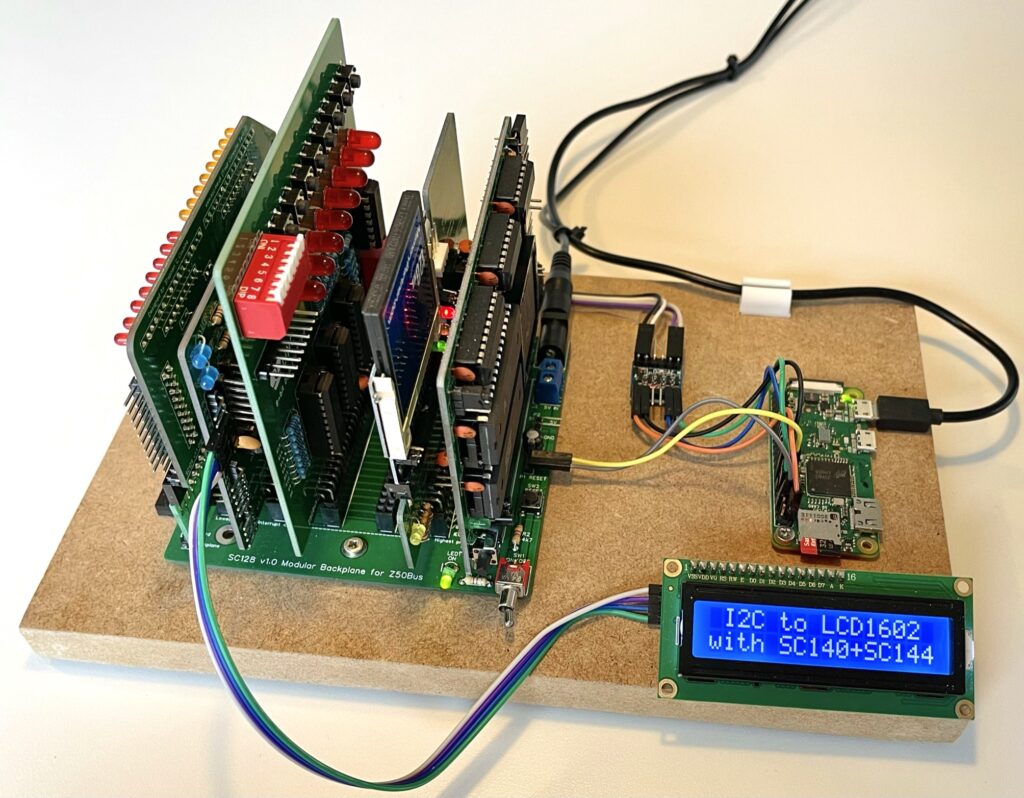This is a Z180 computer using the Z50Bus. It is built mainly using kits from the Small Computer Central by Stephen C. Cousins in the UK. In addition, I use a Raspberry Pi Zero W as a frontend/terminal computer, connected to the serial I/O.
Hardware Configuration
A brief summary of the boards and components in the above system. To the left is the main Z180 system on the Z50Bus backplane, and to the right is the Raspberry Pi Zero W.
- SC128 Backplane for the Z50Bus.
- SC140 Z180 Motherboard with CPU at 18.432 Mhz, 512 KB RAM, 512 KB ROM (flash).
- SC127 Compact Flash interface used for 128 MB of disk drive(s).
- LiNC Digital I/O board.
- SC144 I2C bus and realtime clock.
- SC129 Digitial I/O mounted in an Z50Bus to RC2014 adapter by LiNC.
The Raspberry Pi Zero W is connected to serial I/O on the SC140 using a bidirectional level shifter. NEVER connect a 5 Volt TTL output from a Z80/Z180 system to a Raspberry Pi input, because they only tolerate 3.3 Volt and may get damaged by over-voltage.
In the above setup, a cheap LCD with 16 characters by 2 lines is added as an I2C device connected to the SC144, just for experimenting with I2C. If you want to use the I2C please note that you have to make the I2C driver yourself, which is of course part of the fun! You can find many examples by googling, and I have also made a small example in Borland Turbo Pascal.
Compact Flash card or micro-SD card?
I have chosen to add the SC127 Compact Flash card. The SC140 motherboard can use a small micro-SD card adapter directly connected to the board as a disk, and it runs perfectly fine from this. From my own experience and sample performance measures, I find the Compact Flash speed to be about double the speed of the SD card, so I go for the added performance. The micro-SD cards are really cheap, and often cheaper than the Compact Flash cards.
Software Configuration
The SC140 comes with an amazing set of software in ROM: RomWBW by Wayne Warthen. This is provided completely free of charge, and is open source! It is simply excellent, very feature rich and stable, and has lots of nice documentation too.
The system runs CP/M version 3, which is installed on the Compact Flash card. You can run CP/M 2.2 and other OS too, but I think I have settled for CP/M 3 because it is stable, well organized, and takes advantage of RAM bank switching to handle more memory in the system.

